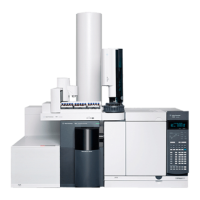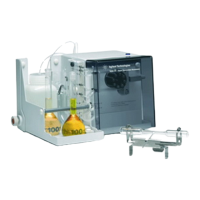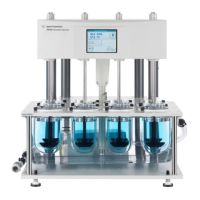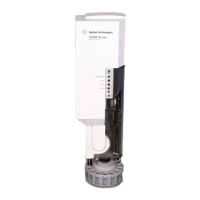Agilent 7100 Capillary Electrophoresis System User Manual 101
Using the Agilent 7100 Capillary Electrophoresis System 5
Capillary Electrophoresis, CE
When using buffers containing detergent (for example SDS), replenishment
may not fulfill your needs. The limit for SDS concentration is 70 mM. Do not
exceed this concentration. Add some organic liquid to the waste bottle so that
bubbles do not form. Also see “Problems with the Replenishment System and
Buffers Containing SDS” on page 168.
Preconditioning
In order to have stable conditions for your analysis, it is important to
condition capillaries.
Depending on the separation mode used it can comprise:
• conditioning the capillary with conditioning agents, and
• equilibrating the capillary with buffer.
These conditioning steps can be programmed using an expandable table in the
right side of the CE Method Setup screen. The associated timetable can be used
to apply pressure, apply voltage or flush between vials. Inlet and outlet vials
can be loaded and wait time can be programmed here. If suitable, such steps
can also be done as a postconditioning operation (“Preconditioning and
Postconditioning” on page 143).
The time for a replenishment step can vary from vial to vial.
Condition capillaries according to their specifications. Fused silica capillaries are typically
rinsed with alkaline or acidic solutions for conditioning. Please be aware that most coated
capillaries will be irreversibly damaged by this.
To minimize contamination of buffer vials with conditioning solutions (such as NaOH)
which might stick to the outside of the capillary or electrode, it is recommended to dip the
electrode in an additional step in a large dedicated vial filled with buffer prior to letting the
instrument load the actual inlet and outlet home vials with run buffer. This precaution can
be programmed into the timetable by a combination of the commands “load vial” and
“wait”.
